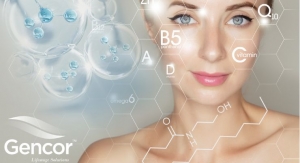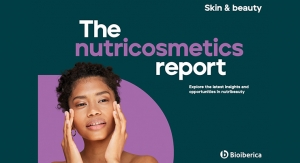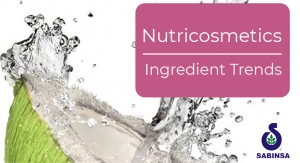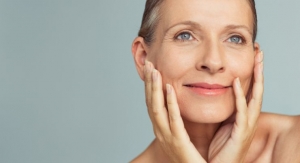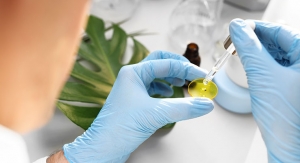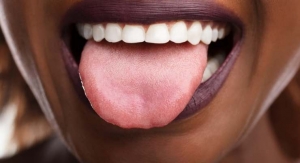Paula Simpson, BASc09.07.10
According to leading market analysts, the global personal care market was valued around $328 billion in 2009. Nutricosmetics, a marriage of the personal care and nutraceutical categories, was valued at more than $2 billion in 2009 and is expected to grow to well over $5 billion by 2015.
At the present time, North America represents only 5% of the global market—lagging far behind Japan and Europe. Nevertheless, the “beauty-from-within” concept is catching on quickly among American consumers.
To date, the major players in the U.S. nutricosmetic market include:
• Nutraceutical “boutique” companies that offer niche brands, and technical, sophisticated, scientifically credible formulations
• Large companies extending their brands into the nutricosmetic segment (both cosmetic and nutraceutical), targeting mass market consumers—with less emphasis on efficacy and more on market appeal
• Mergers with large food, nutraceutical and cosmetic corporations—pulling intellectual properties and resources together to build successful nutricosmetic brands
At about 60 active players in the U.S. and Europe to date, market researchers predict several new players will be hitting the market soon, especially from China and Brazil.
Nutricosmetic Market Drivers
According to Frost & Sullivan, the key drivers moving the nutricosmetic category include: credible ingredients, clinical evidence to back claims, an aging population and natural/organic trends.
With sophisticated and credible ingredients in the market today, nutricosmetics are proving there are fortified options through functional foods and supplementation to promote healthier skin, hair and nails. In addition, today’s consumers are becoming more educated about the overall health benefits of balanced nutrition and are more interested in protecting themselves from accelerated aging through more natural and noninvasive protocols.
Nutrient influences on human health have been studied for years with credible clinical studies to back the correlation between specific nutrients and their effect on controlling accelerated aging, especially with regard to the skin.
As consumers live longer, they are looking to “age well” in terms of their overall health, energy and beauty. Globally, the mature consumer is seeking products to help “prevent” illness, while making them look and feel their best. Antioxidants and other premium ingredients in nutricosmetics support this consumer demand.
Lastly, consumers are becoming more interested in “natural” alternatives in skin health and beauty. This coincides with the rise in eco-friendly and organic/natural beauty brands. Nutricosmetic ingredients are usually naturally sourced making them appealing to consumers.
The Evolution of Nutricosmetics
The concept “you are what you eat” is not new, but it is taking on new life in the form of nutricosmetic products. The skin is the largest organ in the body and serves, among many other functions, as a secondary organ of elimination. Thus, what the body takes in and processes through the gastrointestinal (GI) tract may also be expressed in some metabolized form on or through the skin. European and Japanese consumers of beauty and wellness products have embraced this notion of “beauty from within” so much so that these demographics accounted for the majority in nutricosmetic sales and growth in 2009, representing approximately 55% of the market. Nutricosmetics help to bring about beauty, whether as anti-aging or condition-specific agents, through an internal route. These so-called “functional foods,” in the form of ingestible pills or liquids, are thought to have an effect, either reactive or preventive, on outward appearance.
Furthermore, nutricosmetics have been used in Europe and Asia for decades. In the U.S., products first entered the market in the 1980s and are generally comprised of three basic categories of ingredients: antioxidants, essential fatty acids and vitamins.
Antioxidants help to prevent free radical damage and oxidative stress, both of which are believed to contribute to (premature) aging. Antioxidant ingredients hold almost half of the market share in the nutricosmetic sector. The most popular ingredients are proanythocyanidins, green tea polyphenols, superoxide dismutase or SOD (sourced from cantaloupe extract), CoQ10, phytosterols and carotenoids (as lycopene and lutein).
Essential fatty acids have anti-inflammatory properties; examples include omega 3 and 6 fatty acids (as linolenic acid).
Vitamins are involved in a plethora of physiologic functions for growth and maintenance and include, most commonly, vitamins A, B, C, D and E.
Embracing a New Approach to Beauty
There is an obvious link between food and health. Therefore, it is reasonable to believe there is an equally strong association between nutrition and the health of one’s skin, hair and nails.
The best sources of vitamins, minerals and antioxidants are whole, unprocessed foods. However, modern living, with all of its inherent stresses, may deplete ingested or internal stores of energy and nutrients, thus necessitating oral supplementation. As a result, while nutricosmetics are not new per se, their use may signal a paradigm shift in the way that beauty is achieved or maintained. Moreover, nutricosmetics may herald a new direction in age management that offers a wider, global accessibility to better overall wellness, of which beauty is a component.
Traditional topical cosmetics are applied on the epidermis and work only on the most superficial layer of the skin. This has limited effects, as topical products have no other benefit from a more holistic perspective, neither on adjacent skin nor distant organs or tissues. Further, traditional cosmetics may irritate the skin.
It is sometimes difficult to determine which skin type is better suited to a particular product. In other words, not all topical formulations will yield consistent results on all skin types. Nutricosmetics may alleviate this issue altogether as each person’s digestive system will metabolize the product and theoretically derive what the body needs. This may be a compelling reason to drive the growth of nutricosmetics in the U.S.
Frost & Sullivan believes there are several factors that may stimulate growth in the nutricosmetics market. First, as the population in the U.S. ages, there is a greater emphasis on healthier lifestyles. Since “health” is being viewed more globally as “wellness,” beauty concerns are included in this definition. Commensurate with this is an increased demand for organic/natural, eco-friendly and less toxic products. However, the U.S. consumer is not likely to continue or increase the purchase of such products unless their use is substantiated by scientific evidence supporting their efficacy.
But Frost & Sullivan also points to other factors that may contribute to market restraint vis-à-vis nutricosmetics. Specifically, doubt remains in the U.S. consumer’s mind that the products actually deliver results. In addition, since the oral route of potentially improving appearance is indirect, results may take too long to observe, if the ingested products do not have a reasonably high bioavailability. In a society where instant gratification is revered, a prolonged period before an outcome is regarded as not desirable.
Another potential factor that may slow the growth of the nutricosmetics industry in the U.S. is the development of complex formulations, where it is difficult to discern if a single ingredient has a prominent effect. Also, the lack of both information that consumers are seeking as well as awareness of the potential positive effects that nutricosmetics may have on skin, may serve to limit the expansion of this industry.
For the future, because U.S. consumers are becoming better educated regarding the effects of nutricosmetics, and the products seem to fulfill several needs that traditional cosmetics have not, the market is expected to grow faster than both the personal care and nutraceuticals sectors in the near future.




